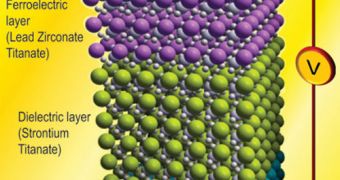For many years, the power supply voltage required to store charge in a capacitor remained stuck at 1 volt. As computers improved, this limitation made transistors run at increasingly hot temperatures, reducing the machine's efficiency. Researchers in the United States now think they can change this.
Physicists at the University of California in Berkeley (UCB) say that their new approach to improving transistors will lead to faster, cooler microprocessors that would make computing safer and more energy-efficient. Reducing electricity use is not necessarily something manufacturers strive for.
What the researchers developed was a way of using ferroelectric materials to reduce the minimum voltage necessary for storing a charge. The work was carried out in the lab of Sayeef Salahuddin, an UCB assistant professor of electrical engineering and computer sciences.
The study also involved Asif Khan, a UCB graduate student in electrical engineering and computer sciences in the lab. Together, the experts have been working towards creating better transistors and more efficient processors since 2008.
“Just like a Formula One car, the faster you run your computer, the hotter it gets. So the key to having a fast microprocessor is to make its building block, the transistor, more energy efficient,” Khan explains.
“Unfortunately, a transistor’s power supply voltage, analogous to a car’s fuel, has been stuck at 1 volt for about 10 years due to the fundamental physics of its operation,” the student goes on to say.
“Transistors have not become as ‘fuel-efficient’ as they need to be to keep up with the market’s thirst for more computing speed, resulting in a cumulative and unsustainable increase in the power draw of microprocessors. We think we can change that,” he adds.
The team used a phenomenon called negative capacitance to amplify the charge stored in a capacitor made out of ferroelectric materials paired with electrical insulators called dielectrics. Ferroelectrics are known for having both positive and negative charges.
Additionally, the polarization of this class of materials can be changed if subjected to a specific, external electrical field. Details of the work appear in the September 12 issue of the esteemed scientific journal Applied Physics Letters.
“This work is the proof-of-principle we have needed to pursue negative capacitance as a viable strategy to overcome the power draw of today’s transistors,” says Salahuddin. He was the first scientist ever to theorize that this is possible.
“If we can use this to create low-power transistors without compromising performance and the speed at which they work, it could change the whole computing industry,” the expert concludes.

 14 DAY TRIAL //
14 DAY TRIAL //